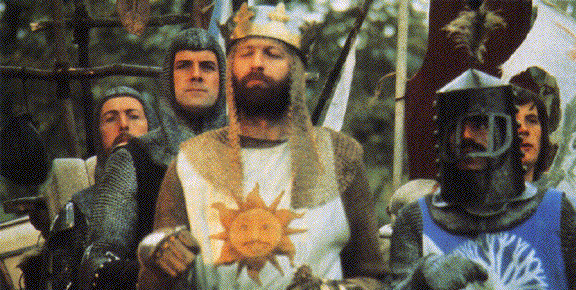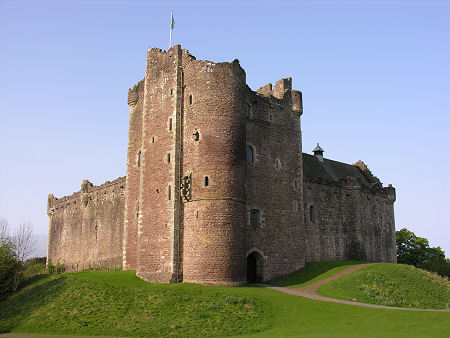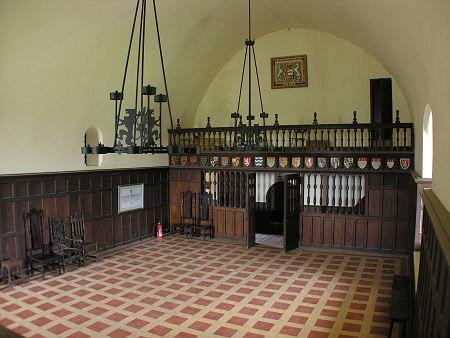| This Week’s Topic… | ||||||

Best viewed in
|
Duone Castle
Doune Castle may look strangely familiar, even to those who have never visited before. It depends on your taste in films: Doune Castle is a place of pilgrimage for Monty Python fans from all over the world who come to see the place where they filmed parts of "Monty Python and the Holy Grail".
It also has other, more traditional, claims to fame. Doune Castle was built at the end of the 1300s for Robert Stewart, Duke of Albany. The exact date of construction is not known and it is believed that the end result is not exactly what was originally planned. But the combination of buildings that emerged met all the military and domestic requirements of a royal castle. Robert Stewart was also Earl of Menteith and Fife through marriage to Margaret, Countess of Menteith. As the third son of King Robert II and younger brother of Robert III, he became effective ruler of Scotland from 1388 until his death in 1420. In 1420 governorship of the kingdom passed to Murdoch, Robert Stewart's son. However, his was to be a short reign. In 1424, James I returned from captivity in England and took power. Doune Castle then became a royal retreat and hunting lodge and was used by successive monarchs for more than a century. In 1570, ownership passed to Sir James Stewart, the first Lord Doune. Later, the title Earl of Moray came to the occupants of the castle through marriage. Doune Castle has belonged to the Earls of Moray ever since. Restoration was undertaken in 1833 and further repairs were made in 1970. In 1984, the 20th Earl of Moray placed the castle in the care of the nation. It is now looked after by Historic Scotland. The north front of the castle houses the gate tower, the main entrance, and the principal domestic apartments laid out in the familiar L-shape of a Scottish tower house. The gate tower is at the north-east corner of the castle enclosure and the gateway is formed by an arch at the head of a 14m long vaulted passage. Situated on the first floor above the gateway passage, the Lord's Hall is reached from the courtyard by an enclosed stone staircase. Once inside, visitors can see the room much as it would have been in the castle's heyday thanks to its renovation in 1883. Wooden paneling lines the wall and a plaque on the west wall displays the arms of the Earl of Moray. Overlooking the hall, at the north end, is a musicians' gallery. From the Lord's Hall passages and staircases lead to other parts of the castle including the upper hall directly above it. Here little remains to give a sense of the grandeur this room once enjoyed, though the vast 2.6m wide fireplace is still impressive.
Niches set into the deeply recessed central alcove show that this area of the upper hall served as a chapel. There would have been a permanent altar and it is likely that the area it occupied was screened off. The Great Hall, to the west of the Lord's Hall, was the grandest room in the castle, reserved for events too large or important to be conducted elsewhere. The room is vast and is reached by a stone staircase in the north-west corner of the courtyard. It is at first floor level, with a covered entrance hall and a screened passage between the hall and its kitchens at the west end. At the east end a raised dais shows where the high table was set. In the kitchen the fireplace takes up the full length of one wall and there are hatches and a doorway through to the servery leading into the screened end of the great hall. Doune castle is a fascinating place. Visitors get a real sense of a living, working castle with its labyrinth of rooms, interconnecting passageways and staircases. In particular the preservation of the Lord's Hall is very impressive. You might even meet Michael Palin or Terry Jones on one of their return visits... |
|||||


